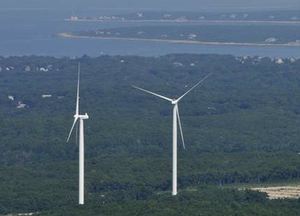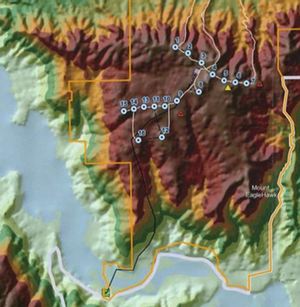A surge of widely-publicized papers purporting to show that those complaining about wind farm noise are being unduly influenced by expectations of harm, or have personalities that are easily upset, may be fostering distrust among residents of Ontario who are randomly selected to participate in an upcoming large-scale survey funded by the provincial government and an ongoing 5-year study by University of Waterloo researchers.
This post, for example, notes that “mischaracterizations are coming out from all around,” and encourages residents to beware of any new surveys that appear to be asking questions about one’s overall quality of life or any annoyances other than wind farms. The concern seems to be that general quality of life or attitudinal/psychological questions can contribute to the sorts of extreme claims that have filled the press recently, suggesting that “nocebo” type effects are the primary cause of health symptoms and annoyance complaints. A detailed comment in the post includes a letter sent by one resident who returned a recent University of Waterloo survey without completing it, noting that “questions appear to be constructed in a manner that can be manipulated to achieve any desired result.” Here’s another site that similarly characterizes the UW survey as a political and wind industry sham.
All of these surveys, in order to be representative, need to have responses from a representative sample of both people being bothered and those who are not bothered. Here, as in some previous research local efforts, distrust has grown to the point that those most affected may not participate. While for many of those being kept awake or otherwise affected by nearby turbines, the question at hand appears very simple—the turbines are the issue, and they affect me—a useful survey will need to do more than simply ask about turbine health effects. There are a lot of contributing factors, and it can be useful to consider many of them.
While such surveys may be subject to misleading interpretations at times, the fact is that surveys and studies are always interpreted differently by those on opposite sides of the issue—where one side sees proof of their supposition, the other sees vague results, poorly designed data collection, or exaggerated significance. It’s clear that both the idea that turbine noise has nothing to do with the problems being reported, and the idea that turbine noise is inevitably harmful for those living nearby, are overstating what studies and surveys have found. Still, such disputed studies provide raw data that can help quantify the extent of issues and become valuable sources of clear information for those on both sides of the issue, and especially for local decision-makers.
In particular, if those most affected decline to participate in the Ontario studies, these surveys will come to conclusions that far fewer people are bothered by noise than are, in fact, affected. This can’t be good for anyone. Rather than fear the possible misinterpretations, it would be better to help assure that these surveys obtain results that reflect the actual extent of the noise problem.
UPDATE, 4/15/13: Some area residents are telling the University of Waterloo researchers that it’s already too late to measure pre-construction stress and other health markers. This study is meant to provide a “before and after” picture of local sleep and overall well-being. But, according to an article in Niagara This Week, residents question whether it will do so:
“You’re not starting in the right place,” resident Debbie Hughes told Bigelow, during the public comment portion of Monday’s meeting. “We are already affected by the turbines. Our stress is already high.”
A dozen residents, all opposing wind turbines, shared similar messages. “It’s too late, two years too late,” said Helen Kzan, wearing an NRWC receptor 2418 bib. “I’ve been to the doctor. They told me to move. My stress level has skyrocketed. My physician told me my stress will kill me before the wind turbines.”
While what the locals are calling “the pre-stress level” is likely already be elevated, it would still seem likely that the study could identify any trends in sleep disruption and more widespread stress that may be caused by the noise of the turbines once they’re built (at least, if those affected choose to respond to surveys). The whole situation highlights the ambiguities that exist in trying to determine the cause of any health effects that do occur.
 Southern right whales have begun giving birth in the waters around New Zealand. Beginning in the 1920’s, none frequented waters around the New Zealand mainland, after an intensive decade of hunting in the 1800’s decimated populations. In the 1990’s, a few scattered sightings began, and in recent years, females and calves are started utilizing sheltered bays. According to Emma Carroll of Auckland University, the whales appear to have lost the knowledge that New Zealand was a valuable winter and calving habitat, but the early exploratory trips by individual whales seems to have led to it being “rediscovered.”
Southern right whales have begun giving birth in the waters around New Zealand. Beginning in the 1920’s, none frequented waters around the New Zealand mainland, after an intensive decade of hunting in the 1800’s decimated populations. In the 1990’s, a few scattered sightings began, and in recent years, females and calves are started utilizing sheltered bays. According to Emma Carroll of Auckland University, the whales appear to have lost the knowledge that New Zealand was a valuable winter and calving habitat, but the early exploratory trips by individual whales seems to have led to it being “rediscovered.”
 The two town-owned turbines had been projected to create a net revenue of several hundred thousand dollars a year, in electricity saved at the town Wastewater Treatment Plant, electricity sold on the open market, and Renewable Energy Credits. However, for the past year, since state DEP noise monitoring found noise levels exceeding state limits in the nearby neighborhood at night, the turbines have been shut down at night, and so operating at a deficit of about $100,000 a year due to the significantly diminished output. This
The two town-owned turbines had been projected to create a net revenue of several hundred thousand dollars a year, in electricity saved at the town Wastewater Treatment Plant, electricity sold on the open market, and Renewable Energy Credits. However, for the past year, since state DEP noise monitoring found noise levels exceeding state limits in the nearby neighborhood at night, the turbines have been shut down at night, and so operating at a deficit of about $100,000 a year due to the significantly diminished output. This  A environmental planning Tribunal in Victoria, Australia recently completed 28 days of hearings about a proposed new wind farm above the Trawool Valley. In a recent
A environmental planning Tribunal in Victoria, Australia recently completed 28 days of hearings about a proposed new wind farm above the Trawool Valley. In a recent  Except in winter. The groundbreaking Travel Management Rule specifically exempted snowmobiles from being subject to the limits contained in each forest’s local Travel Management Plan. The reasoning was that many of the damaging aspects of unfettered ORV use were less relevant in winter; in particular, damage to vegetation and streambeds, and all the related risks of increased erosion. These impacts are indeed significantly less in winter, though some soil compaction can occur beneath snowmobile trails over meadows.
Except in winter. The groundbreaking Travel Management Rule specifically exempted snowmobiles from being subject to the limits contained in each forest’s local Travel Management Plan. The reasoning was that many of the damaging aspects of unfettered ORV use were less relevant in winter; in particular, damage to vegetation and streambeds, and all the related risks of increased erosion. These impacts are indeed significantly less in winter, though some soil compaction can occur beneath snowmobile trails over meadows.